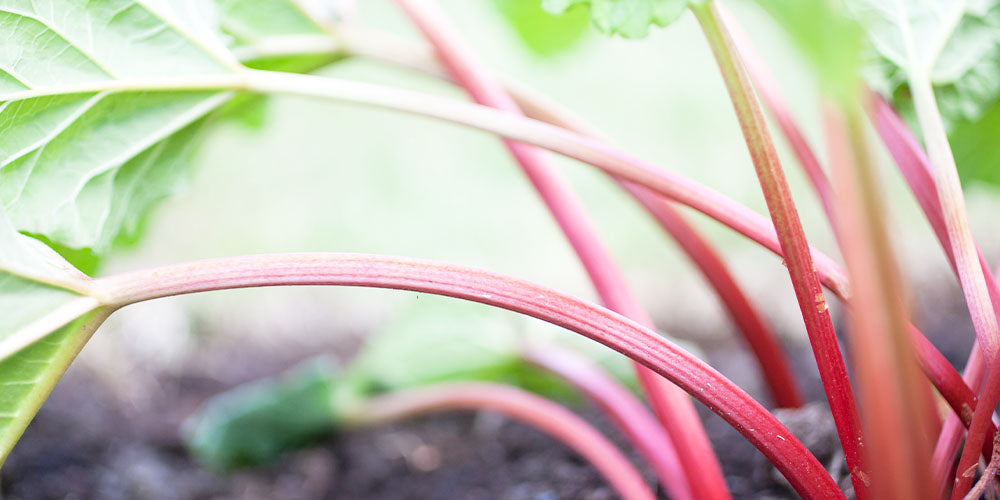Growing rhubarb is easy, but sometimes you run into problems. Let us help you find solutions!
Rhubarb is an incredibly versatile perennial vegetable that adds zing, tang, and tart flavors to desserts, sauces, pies, and crumbles. Once in a while, you may run into problems when growing your own rhubarb patch. Read our complete guide for growing rhubarb so you can troubleshoot any problems you encounter this year.
Rhubarb Growing Basics
Rhubarb is a hardy perennial that can withstand some tough conditions and even a bit of shade. They are wonderful plants if you have a small space but want big flavor. When planting new rhubarb, you’ll want them just at the soil line, with new shoots barely above the ground. Rhubarb will thrive in well-draining soil or raised beds, and be sure to give them a boost with root booster or fish fertilizer. After it becomes established, you can expect to harvest it every 5-8 weeks!
Varieties of Rhubarb
There are plenty of varieties of rhubarb to choose from, and it mostly comes down to personal preference. ‘Canada Red’ and ‘Crimson Cherry’ are large red-stalked varieties. ‘Strawberry’ is a thinner version, and the ‘Victoria’ has large green-red stalks. While these are some of the most common, there are approximately 15-20 other varieties. All rhubarb is perennial, and with proper care, you can have this tangy treat on your table year after year! However, there are some common problems that can take the fun out of growing this tasty edible crop. Here are a few frequent problems and how to address them.
Rhubarb Growing Problem #1
My rhubarb doesn’t look ready!
If your rhubarb plant is new, it may need a few seasons before it becomes fully mature. When it comes to growing rhubarb from new, it takes time to get a good harvest. If you’re hoping for an immediate harvest, you’ll have to track down a well-established container-grown rhubarb plant. If not, give your rhubarb a few years before you harvest it. If you notice the plant putting out white flower stalks, cut them back to give your rhubarb plant a chance to direct its energy into growing foliage.
Rhubarb Growing Problem #2
My rhubarb has crown rot.
Crown rot (also known as stem rot or foot rot) can be a problem when growing rhubarb. It’s a result of a fungus in the soil that gets splashed up onto other plants through contaminated water. To prevent this, be careful when watering, don’t water-log your rhubarb. Cut off infected leaves and stems, and treat with a fungicide.
 Rhubarb Growing Problem #3
Rhubarb Growing Problem #3
My rhubarb looks thin and spindly.
If you are noticing your rhubarb is growing thin, it’s a sign that the plant needs a bit of time to recover from harvesting. Thinning stalks means the plant is low on food reserves and will need to recover. As a good rule of thumb, wait to harvest stalks until they are 12 to 18 inches long.
Rhubarb Growing Problem #4
I don’t know how to harvest rhubarb.
One of the most important things to remember when harvesting rhubarb is not to eat the leaves: they are toxic! When it comes to harvesting the tangy, sour stalks, remember not to harvest in the first year of the plant’s growth and harvest sparingly during the second year. At harvest time, grab the stalk and pull it sideways to get a nice, clean break. Don’t use a knife to cut the stalks. It’s best not to leave remnants of the stalk attached to the plant, as they can rot. Finally, be sure to leave lots of stalks left on the plant, which will keep the plant growing and healthy.
With these solutions to your rhubarb growing problems, you’ll have a thriving rhubarb patch in no time. What will your first rhubarb recipe of the season be? If you’re on the hunt for rhubarb plants for sale in Bettendorf, come visit us! We’ll help you pick out everything you need for your best vegetable garden yet.



